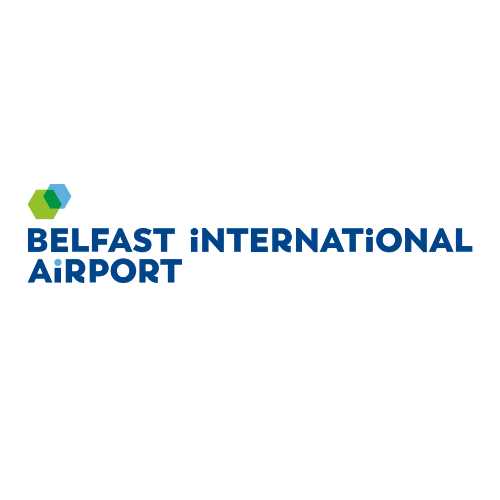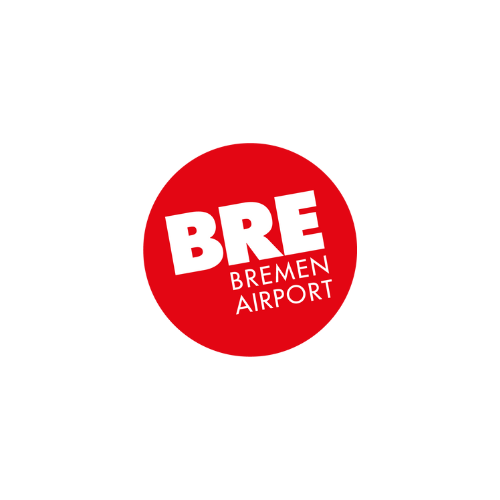Effective revenue management is pivotal for airports striving to optimise both profitability and passenger satisfaction. By integrating dynamic pricing, data-driven decisions, and strategic use of ancillary revenue streams, airports can unlock their full financial potential. As air travel becomes more competitive, understanding these principles is crucial for airport managers and financial executives to remain ahead of the curve.
Here we’ll explore the core principles of airport revenue management, including optimising non-aeronautical revenue streams, dynamic pricing, demand forecasting, and the role of technology. By leveraging actionable insights, airports can achieve financial growth while maintaining high standards of service for passengers.
The importance of revenue management in airports
Effective revenue management is about more than just pricing – it involves optimising every aspect of airport operations, from retail and parking to hospitality services. A well-executed strategy helps airports boost revenue, allocate resources efficiently, and improve the passenger experience.
Key principles in airport revenue management
Dynamic pricing
Dynamic pricing is a game-changer for airports looking to optimise their revenue and stay competitive in an ever-evolving market. This strategy leverages real-time data to adjust pricing in response to demand fluctuations, enabling airports to capitalise on high-demand periods by increasing prices, while simultaneously lowering prices during off-peak times to attract more customers. By using dynamic pricing, airports can effectively balance passenger demand with available capacity, ensuring maximum profitability while maintaining customer satisfaction.
For example, during peak holiday seasons or major events, airports can increase parking rates or security fast track tickets to reflect heightened demand. Conversely, during quieter periods, they can lower prices to encourage passengers to spend more, such as offering discounted lounge access or promotions on retail purchases. This flexibility supports airports in responding quickly to market changes, ensuring their pricing remains relevant and competitive at all times.
Highly-customised pricing solutions take dynamic pricing a step further. Airports can tailor prices based on specific market demands, customer segments, and even individual passenger behaviour. Whether it’s through personalised offers for frequent travellers or discounts on unused services, these highly-targeted solutions help airports optimise both revenue and customer satisfaction.
To implement dynamic pricing successfully, airports need an integrated revenue management system and ecommerce platform that can collect real-time browsing and booking data. With demand analytics and insights, these systems enable airports to automate adjustments, ensuring offerings remain relevant to market trends. Rezcomm Marketplace takes this a step further by personalising promotions and service recommendations based on individual customer behaviours and preferences—offering the right experience to the right person at the right time.
Key benefits of dynamic pricing for airports:
- Maximised revenue: Airports can capture more revenue during peak periods and still attract customers during off-peak times.
- Enhanced customer experience: Personalised pricing and promotions meet customer needs and expectations, leading to higher satisfaction and loyalty.
- Optimised resource allocation: Pricing flexibility ensures that services and facilities are better utilised, increasing efficiency.
- Improved competitive positioning: Airports stay agile in response to market shifts, staying ahead of competitors in terms of pricing and offerings.
- Data-driven decision-making: Real-time data and insights guide pricing strategies, leading to smarter, more informed choices.
By integrating dynamic pricing into their revenue management strategy, airports can adopt a smarter approach that unlocks new revenue streams, streamlines operations, and ensures a more profitable and sustainable future.
Forecasting demand and supply
Accurate demand forecasting is crucial to successful revenue management at airports, enabling operators to anticipate passenger needs, optimise resource allocation, and maximise revenue potential. By predicting passenger numbers with precision, airports can make informed strategic decisions that enhance operational efficiency and financial performance.
Forecasting works by analysing historical data to detect demand patterns, helping airports adjust pricing and resource distribution accordingly. For example, airport lounges can use forecasting models to predict peak occupancy times and implement strategic initiatives such as dynamic pricing, pre-booking incentives, or premium service offerings during high-demand periods. By contrast, during quieter hours, lounges can introduce targeted promotions or limited-time discounts to boost occupancy and drive additional revenue.
Monitoring external events and competitor actions is equally important, as these factors significantly influence demand. Major sporting events, holidays, and economic trends all impact passenger flow, while competitor pricing strategies can shift customer preferences. By continuously tracking these variables, airports can stay agile and responsive, ensuring their offerings remain competitive and aligned with market demand.
Key benefits of forecasting demand & supply for airports:
- Optimised resource allocation: Ensures staffing, retail stock, and lounge space are matched to expected demand.
- Maximised revenue potential: Predicts peak and off-peak periods, enabling strategic pricing and promotional activities.
- Enhanced passenger experience: Prevents overcrowding and service bottlenecks while ensuring a seamless travel experience.
- Data-driven decision-making: Provides actionable insights that enable airports to refine revenue strategies and improve financial performance.
- Competitive market positioning: Keeps airports ahead by tracking competitor actions and external market factors that influence demand.
By integrating advanced forecasting techniques into their revenue management strategy, airports can proactively shape demand, optimise operations, and drive profitability – turning predictions into strategic opportunities.
The role of technology in revenue management
Technology is transforming airport revenue management, with AI and Big Data leading the way. Advanced algorithms process vast amounts of real-time data, identifying demand patterns, predicting passenger behaviour, and enabling hyperpersonalised pricing and service strategies. AI-driven systems automate pricing adjustments, ensuring airports stay competitive while maximising revenue.
Big Data analytics further enhances decision-making by integrating insights from passenger demographics, booking trends, and external factors like weather and major events. This empowers airports to refine pricing models, optimise operations, and create a seamless, revenue-optimised airport experience that benefits both operators and passengers.
Beyond pricing, technology streamlines operations, with automated systems for demand forecasting, inventory management, and dynamic pricing ensuring resources are allocated efficiently. As AI and automation continue to evolve, their influence extends across every ancillary revenue stream, from parking and retail to fast track and lounge, paving the way for smarter, more profitable airport management.
Ancillary revenue sources
As airports evolve into commercial hubs, non-aeronautical revenue sources, like retail, food and beverage, and parking are becoming increasingly important. These ancillary services represent around 37% of an airport’s total revenue, offering a buffer against volatility in air travel. Additionally, the global airport non-aeronautical revenue market is projected to grow by USD 35.05 billion from 2022 to 2027, at a compound annual growth rate (CAGR) of 7.88%, underscoring the growing significance of these revenue streams for airport profitability
Retail & Duty-Fee Contributions
Retail and Duty-Free operations are among the most lucrative non-aeronautical revenue streams for airports. But to maximise this opportunity, airports must take a data-driven approach to demand and supply forecasting, ensuring they have the right products at the right price, at the right time.
By leveraging historical sales data and real-time passenger insights, airports can accurately predict demand fluctuations, ensuring stock levels align with peak and off-peak periods. This prevents lost sales due to understocking while reducing unnecessary inventory costs. Monitoring external factors, such as flight schedules, seasonality, and passenger demographics, further refines forecasts, enabling airports to anticipate high-spending travellers and tailor their retail strategies accordingly.
A well-integrated airport ecommerce platform enhances revenue potential by encouraging passengers to browse and buy before arrival, creating additional sales opportunities. Combining this with cross-selling strategies, such as personalised product recommendations and dynamic bundling, increases overall passenger spending.
Key benefits of demand and supply forecasting in airport retail:
- Optimised stock management: Reduces waste and prevents lost sales
- Enhanced pricing strategies: Supports dynamic pricing based on real-time demand
- Higher passenger spend: Drives revenue through personalised promotions and cross-selling
- Improved customer experience: Ensures availability of in-demand products
- Greater operational efficiency: Aligns inventory with passenger flow and trends
By embracing predictive analytics and smart revenue management, airports can transform their retail operations, ensuring profitability while enhancing the passenger shopping experience.
Parking and ground transportation revenues
Parking and ground transportation are among the most profitable non-aeronautical revenue streams for airports, often generating up to 24% of total non-aeronautical income. Yet, many airports fail to fully capitalise on their potential. By leveraging dynamic pricing and demand forecasting, airports can unlock untapped revenue, optimise occupancy, and enhance the customer experience.
Dynamic pricing models enable airports to adjust parking rates based on real-time demand and occupancy levels, ensuring that premium spaces are priced optimally during peak periods while offering discounts to encourage off-peak bookings. This flexible approach maximises revenue while maintaining high utilisation rates.
Integrating dynamic pricing with parking reservation and ecommerce platforms is key. Online parking reservations and digital ground transportation bookings enable airports to track real-time occupancy, monitor demand trends, and adjust pricing accordingly. This data-driven strategy not only improves revenue but also enhances the passenger experience by ensuring greater availability, transparent pricing, and seamless pre-booking options.
Key benefits of revenue management in parking & ground transportation:
- Maximised revenue: Dynamic pricing optimises income based on demand
- Improved occupancy management: Forecasting ensures efficient space allocation
- Enhanced customer experience: Pre-booking options and competitive pricing improve convenience and loyalty
- Data-driven decision-making: Real-time insights enable agile pricing and inventory adjustments
- Operational efficiency: Smart resource allocation reduces congestion and improves traffic flow
By implementing flexible pricing strategies and data-led forecasting, airports can transform parking and ground transport into powerful revenue generators, ensuring profitability while improving passenger convenience.
Hospitality and food services opportunities
As part of the broader airport experience, food & beverage (F&B) outlets, lounges, and hospitality services represent significant opportunities for ancillary revenue growth. With the right dynamic pricing and demand forecasting strategies, airports can optimise revenue, enhance passenger convenience, and ensure these services are fully utilised.
Dynamic pricing plays a crucial role in maximising F&B and hospitality revenue. By adjusting prices based on demand, time of day, and passenger flow, airports can encourage off-peak sales while capitalising on high-traffic periods. For instance, pre-flight breakfast bundles or express meal discounts during quieter hours help maintain a steady flow of customers, while premium pricing for peak dining times ensures profitability.
Accurate demand forecasting enables airports to predict passenger needs, ensuring adequate staffing, inventory, and pricing strategies. By tracking flight schedules, passenger demographics, and external events, airports can anticipate peak demand for restaurants, lounges, and meeting spaces, preventing lost revenue due to over or under-supply.
Additionally, seamless online reservations for lounges, VIP services, and meeting rooms enhances both revenue capture and passenger convenience. Cross-selling options, such as pre-ordered meals, premium seating, fast track, and equipment rentals, increase per-passenger spend and improve the overall airport experience.
Key benefits of revenue management in F&B and hospitality:
- Maximised revenue: Demand-based pricing optimises income
- Efficient resource allocation: Forecasting ensures the right supply of staff and inventory
- Increased passenger spending: Cross-selling and bundled offers boost revenue per passenger
- Enhanced customer convenience: Reservation options improve service accessibility
- Improved competitiveness: Data-driven insights help airports tailor offerings to passenger preferences
By integrating dynamic pricing, demand forecasting, and flexible booking models, airports can transform F&B and hospitality services into high-performing revenue generators.
The future of airport revenue management
The future of airport revenue management will be shaped by continuous technological advancements and an increasing focus on customer-centric strategies. The integration of AI, machine learning, and real-time data analysis will drive further innovation in dynamic pricing, forecasting, and customer segmentation. These technologies will enable airports to create more personalised travel experiences while maximising revenue potential.
Airports that embrace flexible pricing, advanced data analytics, and customer-focused strategies will be better positioned to thrive in an increasingly competitive market. By ensuring that revenue management systems are responsive and adaptable, airports can continue to grow their financial base while maintaining a high standard of service.
Balancing revenue management and customer satisfaction
Effective revenue management and customer satisfaction go hand in hand – one cannot thrive without the other. While optimised pricing strategies and demand forecasting drive profitability, they must also enhance the passenger experience to ensure long-term success. Fair, transparent, and dynamic pricing models help airports match demand with availability, ensuring that passengers receive value while revenue opportunities are maximised. Personalised offers, seamless booking experiences, and tailored services not only increase spend per passenger but also foster loyalty and positive relationships.
Airports that successfully balance commercial objectives with customer needs can boost both revenue and satisfaction, creating a self-sustaining cycle of growth. By leveraging real-time data and AI-driven insights, airports can adapt their pricing and service strategies dynamically, ensuring they remain profitable, competitive, and customer-centric in an increasingly demanding industry.
Unlock your airport’s full revenue potential
Maximising revenue while enhancing passenger experience requires the right tech stack and data-driven strategies. Rezcomm’s Business modules equip airports with advanced revenue management solutions, helping you gain a 360 view of your airport to optimise pricing, streamline operations, and elevate customer satisfaction. Download our brochure today to discover how Rezcomm can transform your airport’s approach to commercial success.




























